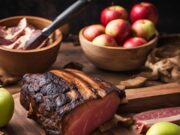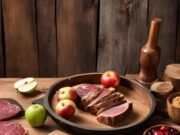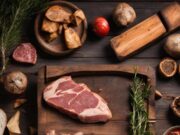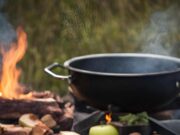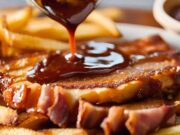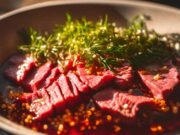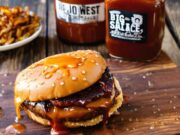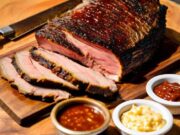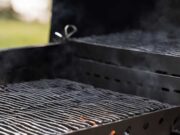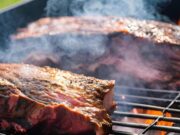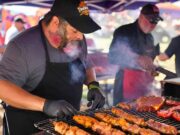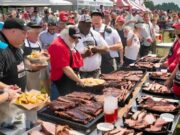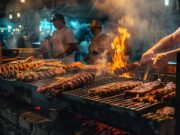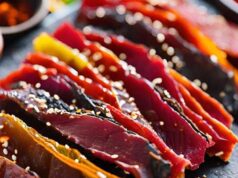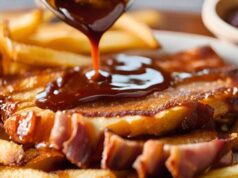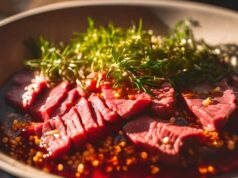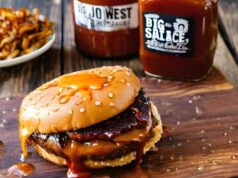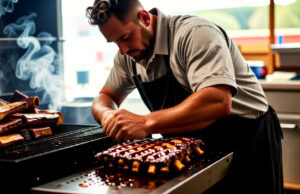If you have ever been captivated by the sight of perfectly smoked BBQ brisket, you are not alone. This classic dish may seem intimidating at first, but with the right guidance, anyone can master it.
This article outlines everything a beginner needs to know, from understanding brisket cuts and selecting the best meat to essential smoking techniques and serving suggestions.
Whether you are preparing for a backyard cookout or looking to impress family and friends, these tips and tricks will set you on the path to brisket success. Prepare to elevate your BBQ skills.
Key Takeaways:

- Choose the right brisket: Look for a well-marbled, USDA Choice or Prime grade brisket for the most tender and flavorful results.
- Master the smoking process: Maintain a consistent temperature throughout the smoking process and use different techniques to add flavor and moisture to your brisket.
- Rest and slice with care: Allow your brisket to rest before slicing to retain its juiciness, and slice against the grain for maximum tenderness.
Understanding Brisket
Understanding brisket is essential for anyone looking to master the art of BBQ. This cut is renowned for its unique characteristics, such as marbling and the fat cap, which significantly contribute to its flavor and tenderness.
Brisket originates from the breast or lower chest of the cow and is divided into two primary sections: the flat and the point. The flat cut is leaner and ideal for slicing, while the point, with its higher fat content, offers a richer and more succulent bite. Recognizing this distinction is crucial for your preparation methods, as the point’s abundant marbling renders down during slow cooking, imparting moisture and maximizing flavor.
The fat cap, a thick layer of fat on the top, not only enhances flavor but also serves as insulation, helping to keep the meat juicy throughout the cooking process. By understanding these nuances, you can elevate your brisket game significantly.
Choosing the Right Brisket
Choosing the right brisket is essential for achieving optimal results in your BBQ endeavors. Different cuts, such as Wagyu and Prime, offer distinct flavor profiles and qualities that significantly influence your cooking experience.
When selecting a brisket, it is important to consider factors like the cut type, which typically ranges from the flat to the point. Each of these cuts brings its own unique characteristics to the table. Opting for higher-grade beef, such as Choice or Prime, can greatly enhance both tenderness and flavor. Retailers like Sam’s Club and Costco often carry a variety of briskets, providing an excellent opportunity for comparison.
Pay attention to marbling, as intramuscular fat serves as a key indicator of quality, ensuring that the meat remains juicy and flavorful during the cooking process. By keeping these aspects in mind, you will be well-equipped to discover the perfect brisket for your next barbecue gathering.
Preparing the Brisket
Preparing the brisket requires following essential steps, including trimming excess fat, applying a high-quality seasoning or rub such as Lane’s Brisket Rub, and comprehending the cooking process to achieve optimal flavor and tenderness.
Trimming and Seasoning
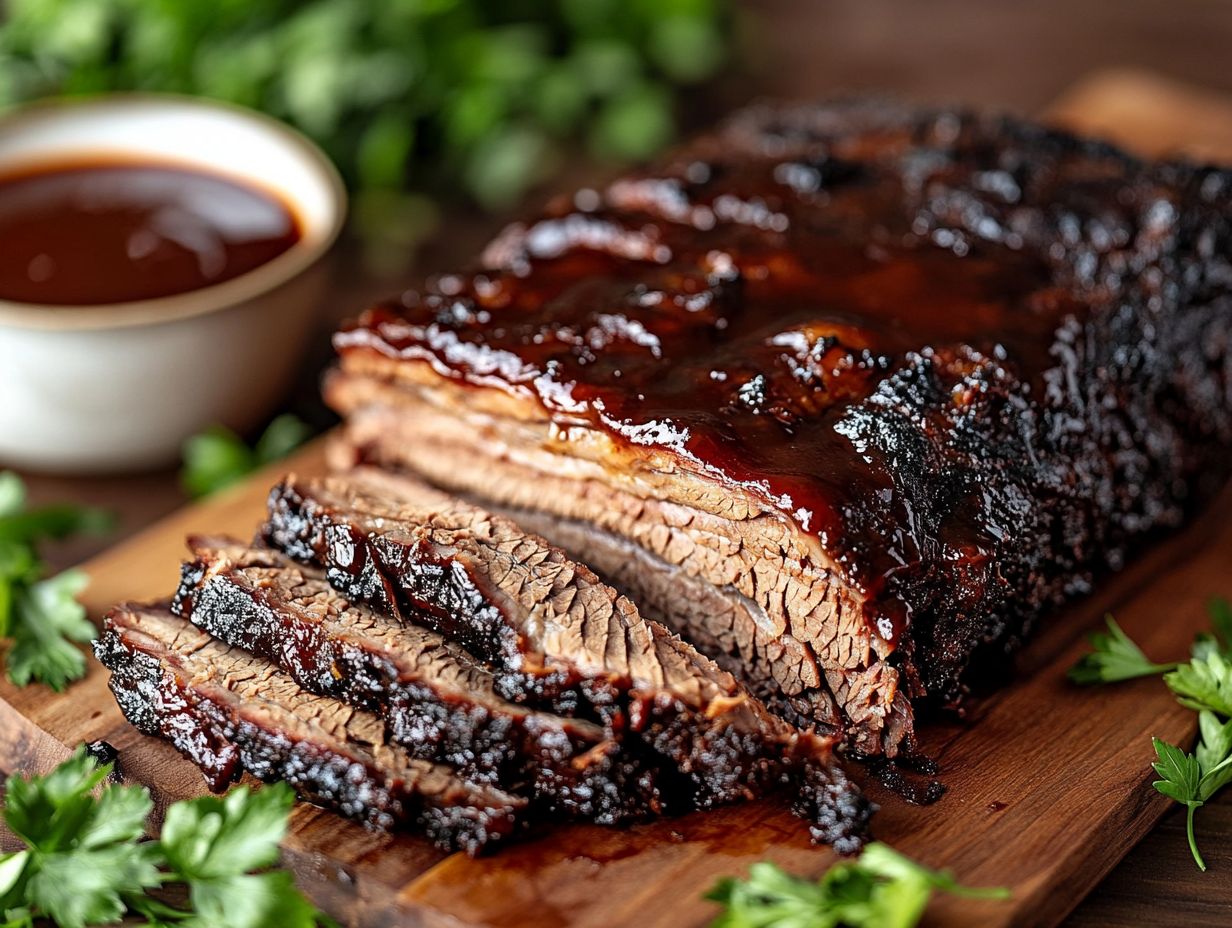
Trimming and seasoning your brisket properly are crucial steps that can significantly enhance the overall flavor and ensure even cooking, allowing the fat cap to render beautifully.
To begin the trimming process, carefully examine the brisket for any excess fat, particularly in the thicker areas around the edges. A good rule of thumb is to leave about a quarter-inch of fat, as this will provide moisture and flavor during cooking while removing any hard pieces that will not render.
Next, pay attention to the silver skin or connective tissue, as this can impede flavor absorption and tenderness; it is advisable to remove it entirely.
Regarding seasoning, consider using a combination of coarse kosher salt, freshly cracked black pepper, and perhaps a pinch of garlic powder for added depth. Apply the seasoning liberally and allow the brisket to rest for a few hours—or even overnight—so that the flavors can penetrate the meat, resulting in a savory and succulent final product.
The Smoking Process
The smoking process is where the artistry of BBQ brisket truly unfolds. Utilizing various wood types, such as Applewood and Cherrywood, allows you to impart distinct flavors and aromas to the meat.
Additionally, maintaining effective temperature control is essential for achieving the ideal tender and juicy outcome.
Smoking Techniques and Temperature Control
Mastering smoking techniques and temperature control is essential for cooking a perfect brisket. The right settings will help break down connective tissues and render the fat effectively, resulting in a tender finish.
To achieve this mouthwatering outcome, you may want to explore various smoking methods, including offset, pellet, or electric smokers. Each of these options offers unique flavor profiles and cooking efficiencies. Understanding the temperature ranges for different cuts of brisket is also crucial; for instance, the flat cut typically requires a steady temperature of 225 to 250 degrees Fahrenheit, while the point can benefit from slightly higher temperatures.
Adjusting your smoking equipment can significantly influence the outcome, as factors like airflow and wood type play pivotal roles in flavor development. By fine-tuning these variables, you can ensure your brisket reaches that coveted state of smoky tenderness, inviting friends and family to savor every delicious bite.
How Long to Smoke a Brisket
The duration for smoking a brisket can vary significantly, typically ranging from 10 to 15 hours, depending on the size and cooking temperature. Therefore, it is crucial to monitor the meat temperature to achieve optimal results.
Several factors influence this cooking time, including the thickness and weight of the brisket. A larger cut will naturally require more time to reach the desired tenderness, and the choice of smoking technique can also play a pivotal role.
Techniques such as low and slow cooking not only enhance flavor but can also extend the duration of the process. Additionally, fluctuations in the smoker’s heat can impact cooking time; thus, it is essential to maintain a consistent temperature throughout.
Regularly checking the internal temperature ensures that the brisket is cooked thoroughly, resulting in the perfectly tender and flavorful outcome that barbecue enthusiasts strive for.
Wrapping and Resting
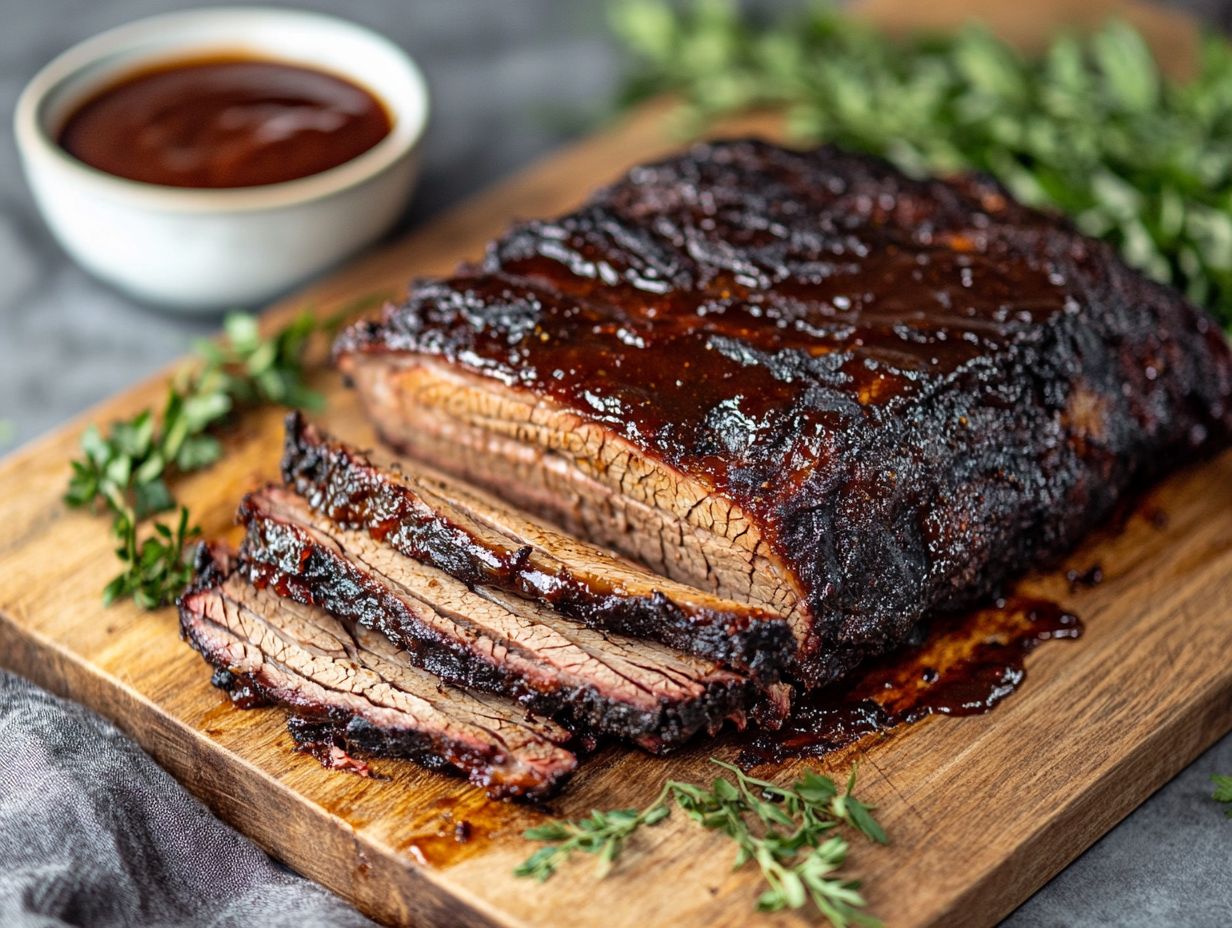
Wrapping and resting your brisket after smoking is a crucial step that aids in retaining moisture and enhancing its flavor. Whether you opt for aluminum foil or butcher paper for the wrapping process, this practice is essential for achieving optimal results.
Slicing and Serving
Slicing brisket correctly is essential for both presentation and enjoyment. It requires a sharp knife and a solid understanding of grain direction to create tender, flavorful slices that pair well with your favorite BBQ sauce and sides.
To achieve the best results, it is important to pay close attention to the orientation of the grain before making the first cut. A good rule of thumb is to slice against the grain, as this helps break down the chewy fibers, ensuring that each bite is succulent.
Seasoning also plays a critical role; applying a good rub infused with spices before cooking enhances the overall flavor profile of the brisket. When serving, consider pairing the sliced brisket with traditional sides such as coleslaw or baked beans, and remember to offer pickles or onions as tangy accompaniments that elevate the meal experience.
Frequently Asked Questions
This section addresses frequently asked questions about BBQ brisket, covering various topics from smoking techniques to cooking tips. These insights are designed to assist beginners in navigating their brisket journey more effectively.
Frequently Asked Questions
What is BBQ brisket and why is it a popular dish?

BBQ brisket is a type of smoked and slow-cooked beef that is traditionally a staple dish in Texas. Its popularity is due to its tender and flavorful meat that is perfect for any occasion.
What are the essential tips for preparing BBQ brisket for beginners?
First, make sure to select a quality cut of brisket with good marbling. Then, properly season the meat and let it rest before cooking. Use a low and slow cooking method, and monitor the internal temperature to ensure it is cooked to perfection.
What are some common mistakes to avoid when making BBQ brisket?
One common mistake is overcooking the brisket, which can result in tough and dry meat. Another is not letting the meat rest before slicing, which can cause the juices to escape. Also, be mindful of using too much wood or smoke, as it can overpower the flavor of the meat.
What are some essential tools and equipment needed for cooking BBQ brisket?
Some essential tools include a good quality smoker or grill, a meat thermometer, and a sharp knife for slicing the brisket. You may also want to have a basting brush, tongs, and aluminum foil for wrapping the brisket during cooking.
Can BBQ brisket be cooked in the oven instead of a smoker or grill?
Yes, it is possible to cook BBQ brisket in the oven, but it may not have the same smoky flavor as when cooked on a grill or smoker. To achieve a similar flavor, you can add liquid smoke to the marinade or use a smoke box while cooking.
How should BBQ brisket be stored and reheated?
After cooking, let the brisket cool down before storing it in an airtight container in the fridge. To reheat, wrap the brisket in foil and place it in the oven at a low temperature until warmed through. You can also slice it and reheat it in a skillet with a bit of broth or BBQ sauce.



